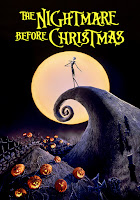The House - Prescence In The Walls
Thoughts On: The House (2022)
A house manifest in separate worlds sees its occupants confront horror and insanity.
With stunning design and staggering stop motion, The House is an evocative triptych centred on an all-consuming house that comes to be a manifestation of individuals losing the will to live. Episodic narratives and triptychs are always under the threat of being compartmentalised and its separated parts compared to one another. As a generic work of surreal horror, one could pick the first episode out as the most sumptuous and well-crafted in terms of lighting and stop-animation. However, there is a subtle flow between each episode that justifies the three separate parts, unifying them to a degree; we see a move away from humanity, toward pests and rodents and finally toward felines; simultaneously we witness people moving into and being consumed by a house, pests rise up and perfect it before imminent destruction, before their predators rediscover the house in dystopia. There feels to be a background narrative binding this triptych together, one that sees the house transform from a witch's haunted house to a rodent's utopia to a cat's derelict moving castle. There is a surreal logic about this that aligns with the thematic focus on obsession and existential loss that utilises archetypes related to witches as well as entities known to make homes out of houses (innocent children, rodents, cats). With the closing of the final chapter, we come to feel an overarching sentiment of freedom evoked between these; a freedom from the imprisonment of self. In each chapter characters use the house to sublimate their true character and desires; a family forget each other, seeking only material possession, and therefore fade into the materiality of their house, losing their children; a mouse wants to escape his life and find love to sail away on holiday with, only to find himself in filth, among insects and rodents for his failure to find and realise his self-worth. In the final transformation, a cat realises her self-subjugation for the sake of the house, seeing that the present is what she has lost sight of, suffering pointlessly for a future of good memories and family already within her reach. This final transformation, the only positive one, aptly surmises the triptych with the movement away from the basement, a detachment from the spell that seems to ground and haunt the house from the beginning. Uprooted in dystopia, the house provides a will to live as opposed to draining it from its occupants. This perhaps speaks to the mobility of self required to maintain the spirit, suggesting a house is not a home because of its roots and place, but the emptiness contained by its walls; something understood only by the children and finally the cats. Prescence in the empty is all we require from a home; it cannot promise us more. A statement on the British financial and housing situation; who knows? A great work of animation well worth the watch.










